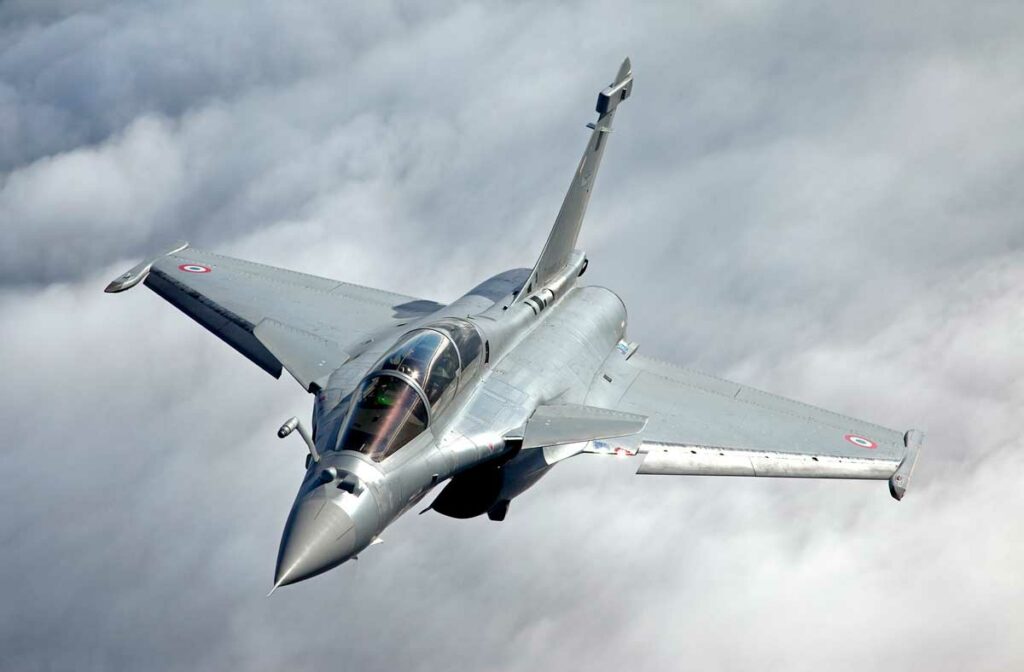
As tensions in Europe rise, we take a good look at France’s readyness for war. Is France really ready for war ?
As Europe confronts rising geopolitical tensions, the question of France’s readiness for a high-intensity conflict is no longer theoretical. Whether facing conventional threats from near-peer adversaries like Russia or adapting to cyber and hybrid warfare, France’s current defense posture is being tested. Despite President Macron’s commitment to increased military spending and strategic autonomy, France struggles with structural shortfalls: insufficient deployable forces, industrial bottlenecks, and political fragmentation. The nation’s military model, designed for limited overseas operations, now faces the challenge of scaling up for sustained conflict. Can France, with its advanced but fragile capabilities, shift toward wartime preparedness without undermining its social and economic foundations? This article explores France’s current weaknesses, the strain on state functions, the true cost of readiness, and the massive societal effort needed to make “readiness” more than just a policy slogan.

1. Current Problems in Preparing for War
France’s ability to prepare for war, particularly in a high-intensity conflict against a peer or near-peer adversary (e.g., Russia or a regional power), faces several challenges across military, industrial, and societal domains:
a. Military Readiness and Capacity
- Limited Deployable Forces: France’s active combat-ready personnel are constrained. As of early 2025, posts on X indicate that only 80,000 of the French military’s 205,000 personnel are combat-ready, with a maximum of 30,000 deployable for expeditionary operations. This limits France’s ability to sustain prolonged or large-scale operations.
- Equipment Shortfalls: Approximately half of France’s military equipment, including tanks and helicopters, is not currently operational due to maintenance issues or obsolescence. Air superiority is a noted vulnerability, with technological deadlocks and insufficient munitions stockpiles.
- Munitions and Logistics: France lacks sufficient munitions for sustained high-intensity conflict, a problem exacerbated by supply chain disruptions and reliance on foreign suppliers for critical components. The defense industry struggles to scale production rapidly.
- Recruitment and Retention: The French military faces challenges in recruiting and retaining skilled personnel, particularly for specialized roles like cyber defense and maintenance technicians. This is compounded by an aging reservist pool and limited public enthusiasm for military service.
b. Budgetary and Industrial Constraints
- Budget Freezes: Despite President Macron’s pledges to increase defense spending to €100 billion, reports indicate that the Ministry of Armed Forces has halted new orders for critical systems like Rafale jets, missiles, frigates, and aircraft carriers due to budget constraints.
- Administrative Inertia: Bureaucratic delays and lack of national coherence in defense planning hinder rapid rearmament. The French defense procurement process is often slow, with long lead times for new equipment.
- Industrial Capacity: France’s defense industrial base, while advanced (e.g., Dassault, Thales, Naval Group), lacks the capacity for mass production to meet wartime demands. The shift from boutique, high-quality systems to mass production requires significant restructuring.
c. Strategic and Geopolitical Challenges
- Dependence on Allies: France relies on NATO and European partners for large-scale operations, but U.S. disengagement from European security (as flagged by Macron in March 2025) and the UK’s post-Brexit focus inward raise concerns about coalition reliability.
- Nuclear Deterrence Debate: France’s nuclear arsenal, while a strategic asset, is under scrutiny for its relevance in conventional conflicts. Proposals to extend nuclear deterrence to European allies face political and financial hurdles.
- Cyber and Hybrid Threats: France’s cybersecurity capacity has been tested (e.g., Macron Leaks in 2017), and the Strategic Review highlights vulnerabilities in digital sovereignty. Cyberattacks and disinformation campaigns could disrupt war preparations.
d. Societal and Political Barriers
- Public Support: French society, accustomed to relative peace since World War II, may resist the sacrifices required for war preparation, such as increased taxes or conscription.
- Political Fragmentation: Frequent cabinet turnovers and political polarization complicate long-term defense planning. The government’s ability to mobilize resources is constrained by competing domestic priorities (e.g., healthcare, education).
2. Impacts on Other State Functions
War preparation would strain France’s state functions, creating trade-offs across economic, social, and governance domains:
a. Economic Impacts
- Budget Competition: Increased defense spending would divert funds from social programs (healthcare, pensions, education), which account for roughly 60% of France’s €1.4 trillion annual budget. This could exacerbate public discontent, especially given France’s 5.5% GDP deficit in 2024.
- Inflation and Debt: Ramping up defense production could drive inflation, particularly in energy and raw materials, as seen during the Ukraine war’s economic disruptions. France’s national debt (112% of GDP in 2024) limits borrowing capacity for large-scale rearmament.
- Industrial Strain: Shifting industrial focus to defense could disrupt civilian sectors like automotive or aerospace, which rely on similar supply chains. Small and medium enterprises, critical to France’s economy, might face labor and material shortages.
b. Social Impacts
- Public Services: Diverting funds to defense could reduce investment in healthcare and education, increasing inequality and social unrest. France’s history of protests (e.g., Yellow Vests) suggests resistance to perceived austerity.
- Conscription and Reservists: Expanding the reservist pool from 40,000 to 100,000 by 2035, as announced by Macron, would require mandatory service or incentives, potentially disrupting labor markets and sparking public backlash.
- Social Cohesion: War preparation, especially against a perceived “Russian threat,” could deepen societal divides, with disinformation campaigns amplifying polarization.
c. Governance and Political Impacts
- Centralization vs. Decentralization: War preparation would require centralized decision-making, potentially clashing with France’s regional governance structures. The Cornudet Law’s precedent of state-led reconstruction suggests a need for strong state intervention, which could strain local governments
- International Relations: Prioritizing defense could strain relations with non-NATO partners (e.g., in the Sahel), where France has shifted from military to governance-focused strategies. Reduced foreign aid or development funding could weaken France’s global influence.

3. Realistic Solutions
To address these problems, France must balance military modernization with economic and societal constraints. Below are actionable solutions:
a. Military Modernization
- Streamline Procurement: Reform the defense procurement process to reduce bureaucratic delays, prioritizing off-the-shelf purchases for munitions and spare parts. Emulate Germany’s €100 billion special fund model for rapid acquisitions.
- Enhance Equipment Readiness: Invest in maintenance and logistics infrastructure to increase operational equipment rates from 50% to 80% within five years. This includes training more technicians and securing supply chains for critical components.
- Expand Reservists: Accelerate the reservist expansion to 100,000 by 2030 (not 2035) through incentives like tax breaks, education benefits, and flexible service terms. Reintroduce limited conscription for cyber and technical roles to address skill shortages.
- Cyber Defense: Strengthen digital sovereignty by investing in national cybersecurity firms and reducing reliance on foreign tech giants (e.g., Google, Facebook). Develop AI-driven threat detection systems to counter hybrid warfare.
b. Industrial and Budgetary Reforms
- Public-Private Partnerships: Collaborate with defense firms like Dassault and Thales to scale production. Subsidize retooling of civilian factories for defense needs, sharing costs with European partners to reduce fiscal strain.
- Budget Reallocation: Gradually increase defense spending to 3% of GDP (€90 billion annually by 2030) by cutting administrative overhead and reforming pension systems. Issue defense bonds to spread costs over time, mitigating public resistance.
- European Cooperation: Deepen the Combined Joint Expeditionary Force (CJEF) with the UK to share R&D costs for new technologies (e.g., counter-drone systems, long-range fires). Expand joint procurement with Germany and Italy to achieve economies of scale.
c. Strategic and Societal Measures
- Public Engagement: Launch a national campaign to build support for defense, emphasizing resilience and collective security. Distribute the proposed “survival manual” to households, framing it as civic empowerment rather than alarmism.
- Nuclear Strategy: Open a transparent debate on extending France’s nuclear deterrent to European allies, integrating it into NATO’s Nuclear Planning Group to enhance credibility without expanding the arsenal.
- Governance Reforms: Create a cross-ministerial task force to align defense, economic, and foreign policy priorities, reducing administrative inertia. Use historical lessons from post-WWI reconstruction to streamline state-led efforts.
4. Costs of War Preparation
Estimating costs requires assumptions about the scope and timeline of preparation. Below is a breakdown based on a 10-year plan to achieve high-intensity conflict readiness:
a. Financial Costs
- Defense Budget Increase: Raising defense spending from 2% (€60 billion in 2025) to 3% of GDP (€90 billion) by 2030 would require an additional €30 billion annually. Total cost over 10 years: ~€150 billion (assuming gradual increases).
- Equipment Modernization: Upgrading tanks, helicopters, and air defenses, plus munitions stockpiling, could cost €50–70 billion over a decade, based on Germany’s €100 billion modernization fund as a benchmark.
- Reservist Expansion: Training and equipping 100,000 reservists by 2030 would cost €10–15 billion, including incentives and infrastructure.
- Cyber and R&D: Investing in cybersecurity and new technologies (e.g., hypersonic missiles, counter-drone systems) could cost €20–30 billion, partially offset by European cost-sharing.
- Total Estimated Cost: €230–265 billion over 10 years, or €23–26.5 billion annually (~1–1.2% of GDP). This excludes nuclear arsenal expansion, which could add €10–20 billion if pursued.
b. Economic Trade-Offs
- Opportunity Costs: Diverting €30 billion annually from social programs could reduce healthcare and education budgets by 5–10%, risking public unrest.
- Debt Impact: Financing through bonds or borrowing would increase France’s debt-to-GDP ratio to ~120% by 2030, assuming no economic growth shocks.
- Industrial Benefits: Defense investments could create 50,000–100,000 jobs in the defense sector, offsetting some economic strain but requiring workforce retraining.
5. Effort Required
War preparation represents a significant national effort, requiring coordination across multiple domains:
a. Political Effort
- Consensus Building: The government must forge a bipartisan consensus to sustain defense spending increases, overcoming political fragmentation. This requires strong leadership from Macron or his successor.
- International Diplomacy: France must lead European defense integration, convincing skeptical partners like Germany to co-finance initiatives. This involves navigating EU fiscal rules and NATO dynamics.
b. Societal Effort
- Cultural Shift: Shifting public perception from peace to preparedness requires sustained communication. The “survival manual” initiative could help, but it risks backfiring if perceived as fearmongering.
- Mobilization: Expanding reservists and potentially reintroducing conscription demands societal buy-in. France’s universal national service program (Service National Universel) could be scaled up, but it requires careful messaging to avoid resistance.
c. Industrial and Economic Effort
- Industrial Overhaul: Retooling factories and securing supply chains for wartime production is a multi-year effort, requiring coordination with European partners to avoid duplication.
- Workforce Training: Training 10,000–20,000 new technicians and cyber specialists over a decade demands investment in vocational programs and STEM education.
d. Military Effort
- Operational Tempo: Increasing training exercises and reservist readiness requires doubling current training budgets and expanding facilities.
- Strategic Reorientation: Shifting from expeditionary operations (e.g., Sahel) to high-intensity warfare preparation requires doctrinal changes and new command structures.

6. Critical Assessment
France’s war preparation is constrained by structural and historical factors. The French military’s focus on quality over mass, as noted in the 2023 Military Programming Law, prioritizes high-end capabilities but limits scalability for prolonged conflicts. The reliance on nuclear deterrence assumes NATO support, which may not be guaranteed given U.S. strategic pivots. Historical parallels, such as the interwar Maginot Line’s failure to adapt to mobile warfare, underscore the risk of misaligned priorities.
Realistically, France cannot prepare for war alone; it must leverage European cooperation to share costs and capabilities. The CJEF with the UK and potential joint procurement with Germany are viable paths but require political will. Budgetary constraints and public resistance are the biggest hurdles, as France’s high debt and social spending commitments limit fiscal flexibility.
France faces significant challenges in preparing for war, including limited deployable forces, equipment shortfalls, budgetary constraints, and societal resistance. These issues strain economic and social functions, risking inflation, debt, and public unrest. Realistic solutions involve procurement reform, reservist expansion, European cooperation, and public engagement, costing €230–265 billion over a decade. The effort requires political consensus, industrial overhaul, and a cultural shift toward resilience. While France’s strategic autonomy and nuclear capabilities provide a foundation, success depends on balancing domestic priorities with European collaboration to achieve credible deterrence and readiness.
War Wings Daily is an independant magazine.